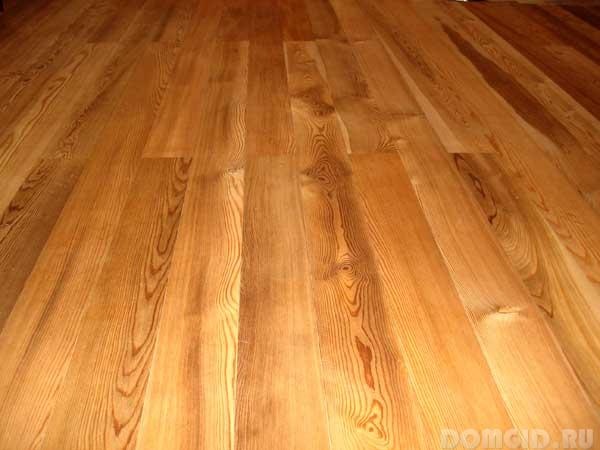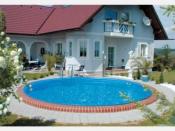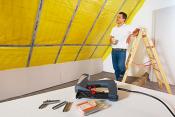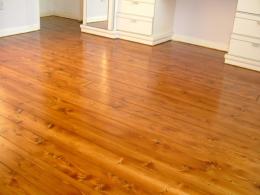Search
Login
Why does the wood floor creak, how do you remove the creak of the wooden floor with your own hands
The newly built house still fills the aroma of freshly sawn wood, the paint on the windows pleases with its brightness, and the doors have not cracked and are not warped. It would seem that everything is just fine, but More recently, the laid floors are beginning to creak little by little, and in some places even the first signs of warping appeared.
This problem, sooner or later, is faced by more than half of homeowners. We will try to establish the reasons and find out the available solutions to this problem in this article.
Content
- Why do the floors creak
- The wooden floor creaks, what should I do?
- Ways to eliminate the creak of a wooden floor
- Video instructions for eliminating creaking wooden floors
- Squeak Prevention of Wooden Floors
- How to lay the floor so that it does not creak, video
Why do the floors creak
There are many reasons why squeaking floors in home. Starting from the wrong flooring and ending with poor-quality material. Some of the most common are:

Warping of lumber as a result of drying. Perhaps, a floor was purchased for the floors, which did not dry to the required 12% humidity. (This value is taken as the basis for the sale of dry lumber and is optimal).
Incorrectly installed logs on which a wooden floor is laid. Even professionals make mistakes and the floor laid by specialists can begin to creak after a short period of time. In this case, the reason is the wrong distance between the supporting beams on which the edged sawn timber is laid. Most often, it is too large and creaks the wooden floor from active use, as a result of which the boards bend and rub against each other.

Support chairs (they are also sometimes called stools), installed under the logs, can sag a little into the soil, as a result of which the general geometry of the wooden structure is violated and a clearly calibrated level is lost.
Rot and fungus, in rooms with high humidity, can significantly damage lumber, in this case gaps and cracks form, which in turn leads to friction of the boards between themselves and lags, as a result of which they begin to creak to all voices.
Squeaky wooden floor what to do?

Even reliable larch boards can squeak disgustingly shortly after being laid. What can we say about tree species such as pine, fir or spruce. Which do not have such reinforced concrete strength and reliability as larch. To get rid of this scourge that can spoil the dream of more than one member of the family, you should first get the following tools:
- Nail Clipper (for dissecting floors)
- Hammer (in order to hammer nails into place)
- Hacksaw (to file cubes / wedges, for lining under boards)
- Ax (to cut the bars to the desired size)
- Drill (drill holes for screed with self-tapping screws in case of not opening the floor)
- Crayon or marker (to outline problem areas)
Now that all the necessary tools are selected, we eliminate the creak of the floor in the apartment.
First you need to determine the area of \u200b\u200bthe floor that creaks the most. Walk on the floor and listen to where the sounds are the loudest. Check if there is a creak in any one place, when stepping on certain places on the floorboard or if it creaks whole. Mark all identified places.
Ways to eliminate the creak of a wooden floor
Having identified the problematic floorboards, in the places of screed boards and logs, drill a hole through (through the board into the beam) and screw in the screw of the required diameter there. Of course, you can use a nail for this, but the screw pulls the boards together much better. Then try again to step on the floor and listen to whether the boards creak in this place. If the creak significantly decreased and became much quieter, then the problem was precisely that the edged sawn timber as a result of active use moved away from the load-bearing beams and it was only necessary to fix it firmly. In this case, it is enough to go through all the problem areas and firmly fasten the boards to the lags.
If this method does not help and the nasty creak of the floor after these manipulations has not been eliminated, then you need to look for reasons more deeply. Perhaps the reason is the gaps between the floorboard and the supporting beam, and they can be eliminated only by placing wooden blocks or wedges under the boards. To perform this operation, the floors will have to be opened with a nail puller and put under the problem areas (between the chair and the beam) the bars of the required size. In order to eliminate the gaps between the boards themselves, you can also use wedges.

The wooden floor in the apartment also creaks from the fact that neighboring boards rub against each other. To eliminate this cause of squeaking is extremely simple, you just need to pour a little graphite powder or talc in the places of their contact. This simple procedure will have a truly magical effect on the adjacent boards, and they will cease to creak.
If, when opening the floors, it appears that the boards are skewed or warped, and there is no way to buy new ones, you can fill the gaps and cracks with a special paste made of sawdust (preferably the same wood species) and wood glue. A mixture is made at the rate of 4/1, where 4 parts of sawdust and 1 part of glue are taken. If necessary, the adhesive can be replaced with a simple floor paint. With this paste you need to carefully cover all the bends and gaps that have formed, after which the boards must be laid in their old places. If the reason for the creak was precisely this, then this method guarantees getting rid of unpleasant sounds.
Squeak Prevention of Wooden Floors
In order not to think about how to eliminate the creak of a wooden floor, you need to carefully measure the distance between the supporting beams (it should not be too large).

The chairs on which the load-bearing beams are located should be set according to the level and it is advisable to pour concrete pillows under them. This will help them not to sag over time and clearly keep the given sizes.

Place special damping pads (insulation or waterproofing) under the boards, which will serve as an additional shock-absorbing layer that can prevent creaking.
If you lay the floor using these tips, then the creak for a long time will not disturb either your sleep or your nerves. Despite the fact that sooner or later this problem arises among all homeowners, wood remains the best, most profitable and environmentally friendly option for flooring both in private houses and in comfortable apartments.





